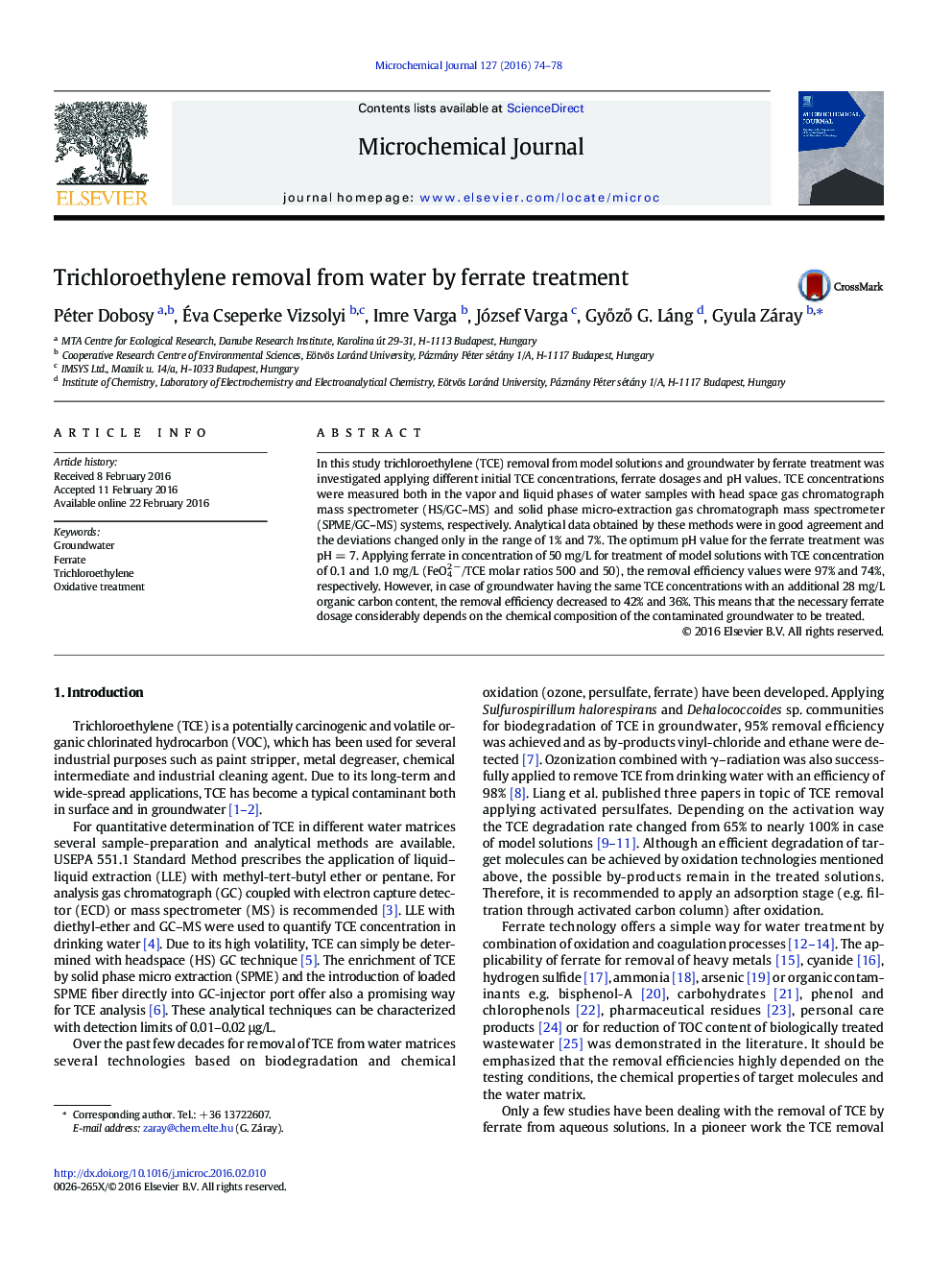| Article ID | Journal | Published Year | Pages | File Type |
|---|---|---|---|---|
| 1227502 | Microchemical Journal | 2016 | 5 Pages |
•Trichloroethylene (TCE) removal from water matrix was studied by ferrate treatment.•pH and ferrate dosage were optimized.•HS/GC–MS and SPME/GC–MS analytical methods were compared.•Matrix effect of groundwater on TCE removal efficiency was investigated.
In this study trichloroethylene (TCE) removal from model solutions and groundwater by ferrate treatment was investigated applying different initial TCE concentrations, ferrate dosages and pH values. TCE concentrations were measured both in the vapor and liquid phases of water samples with head space gas chromatograph mass spectrometer (HS/GC–MS) and solid phase micro-extraction gas chromatograph mass spectrometer (SPME/GC–MS) systems, respectively. Analytical data obtained by these methods were in good agreement and the deviations changed only in the range of 1% and 7%. The optimum pH value for the ferrate treatment was pH = 7. Applying ferrate in concentration of 50 mg/L for treatment of model solutions with TCE concentration of 0.1 and 1.0 mg/L (FeO42 −/TCE molar ratios 500 and 50), the removal efficiency values were 97% and 74%, respectively. However, in case of groundwater having the same TCE concentrations with an additional 28 mg/L organic carbon content, the removal efficiency decreased to 42% and 36%. This means that the necessary ferrate dosage considerably depends on the chemical composition of the contaminated groundwater to be treated.
